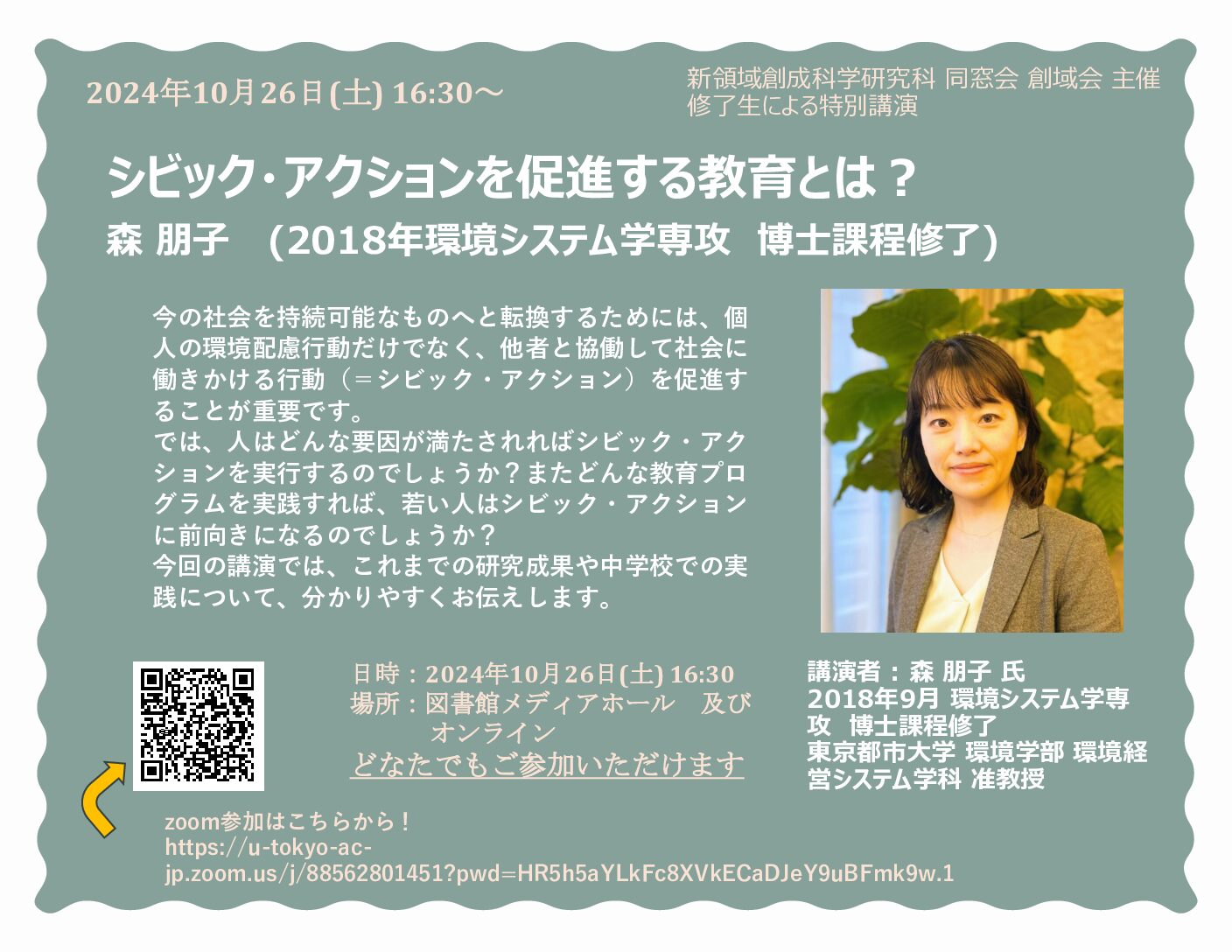■ 7月のコラム
■■ サステイナビリティ学グローバルリーダー養成大学院プログラム
■■■ 亀山康子教授
異常気象と気候変動と報道
気候変動政策の研究をしている職業柄、世界で起きる異常気象が気になる。各種報告書で示されているように、地球の温暖化により、世界各地で熱波、干ばつ、集中豪雨、突風等の異常気象の頻度が確実に増加している。
異常気象も気になるが、その情報の伝わり方がさらに気になっている。近年SNSやネットニュース等、媒体の多様性は広がっているが、かつての主要マスメディア業界である新聞やテレビ会社もネット環境にその活動範囲を広げていて、今でも報道ぶりを把握するのに参考になる。
つい最近まで、日本メディアが異常気象を扱う際、その原因には触れなかった。最近ではようやく最後の方に「地球温暖化の影響もありうる」というレベルの一文が追記されるようになったが、暑い夏は「真夏日」と表現され「水分補給を怠らずに」「適度にエアコンを使って」という話に終始する。いまだに国内の高温に「熱波」という言葉が使われたのは見たことがない。国外の異常気象に至っては、記事にさえならないことが多い。
一方、欧米の主要メディアでは、記事の中ほどで、異常気象が起きる原因に言及し、気候変動により何倍起きやすくなったという科学的な説明を入れている。見出しに気候変動という言葉が入ることもある。ここ数年で珍しくなくなった山火事の記事では、カラーの大きな写真が用いられ、見た目にも深刻な状況であることが伝わる。
このようなメディアの伝え方の違いにより、読者の受け止めも違ってくるだろう。現実以上に煽るのは良くないが、煽っていると受け止められるのが怖くて現実を伝えずにいるのが国内の状況ではないか。自分で証明できたわけではないのだが、そう感じることが多い。このような愚痴をこぼすと海外のジャーナリストも賛同してくれた。地球温暖化という言葉は知っていても、その脅威を感じる能力が麻痺してしまっていないだろうか。伝わる伝え方を模索している。
■ The Column of June
■■ Graduate Program in Sustainability Science
■■■ – Global Leadership Initiative
■■■■ Director Professor Yasuko Kameyama
Extreme Weather, Climate Change, and Media
Professor Yasuko Kameyama, Graduate School of Frontier Sciences
As a researcher on climate change policies, I am for sure worried about the increasing frequency of extreme weather events globally under global warming, including heat waves, droughts, torrential rains, and wind gusts.
More than that, I am concerned about the way this information is being communicated in the diverse media sources such as SNS and online news. Newspapers and TV, once the main mass media, have also expanded their activities into the online environment, and continue to play a role in reporting new information.
Until recently, when the Japanese media dealt with extreme weather events, they did not mention the causes. Recently, they have finally added a sentence at the end of their reports to the effect that “global warming may be a factor”. The term “heat wave” is still not used to describe high temperatures in Japan. Rather, they refer to hot summers as “midsummer days” and focus on “staying hydrated” and “using the air conditioner whenever needed’’. In many cases, abnormal weather outside of Japan is not even reported in the media.
In contrast, the causes of extreme weather events and the scientific explanation of how many times more likely they are to occur due to climate change, is frequently mentioned in major Western media outlets. Sometimes the words climate change is included in the headline. Articles on wildfires, which are becoming more and more common in recent years, often include large, colored photographs to convey the apparent seriousness of the situation.
The varying ways the media communicate the situation will be perceived differently by readers. It is not good to stir things up more than they really are, but in Japan, it makes people not willing to tell the reality for the fear of being perceived as stirring things up. At least this is how I often feel, and foreign journalists agree with me when I complain about this. I wonder if we have become paralyzed in our ability to feel the threat of global warming, even though we are familiar with the term. We need to search for a better way to convey the message.
恐ろしい山火事の写真(本記事と直接関係ありません。)Dreadful wildfire pictures (It’s not directly related to this article)






